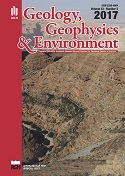The potential for locating hydrocarbon traps in the Rotliegend formation, based on the results of experimental seismic surveys
DOI:
https://doi.org/10.7494/geol.2017.43.3.191Keywords:
Rotliegend, seismic survey, lithologic traps, Chodzież trapAbstract
Within the framework of the Operational Programme Innovative Economy 2007-2013, studies were carried out for improving the effectiveness of using seismic surveys in the prospecting and exploration of gas fields in the Rotliegend formation. The completed experimental seismic surveys provided new, very interesting data on the geological structure of the deeper part of the Rotliegend basin (>4000 m), which is practically very important for prospecting for new gas fields. The interesting results were obtained along virtually the entire cross-section, particularly in two segments: the southern segment – in front of and within the Człopa-Szamotuły tectonic zone (the Szczecin-Gorzów segment) and the northern segment – in the area of the Zabartowo-1 and Zabartowo-2 wells (the Pomeranian segment). In the northern segment, for the first time in the history of studies of the Lower Permian Basin, it was possible to record reflections from the horizon of the aeolian sandstones occurring within the playa silty-clayey deposits (543 m below the top of the Rotliegend formation), which represents a significant achievement from the point of view of prospecting for hydrocarbon resources. This horizon, characterized by favourable reservoir properties, pinches out northward. It is a very important piece of information because systems of lithologic traps may be related to such pinchouts. In the central part of the Obrzycko-Zabartowo profile, in the Chodzież area, a vast structural elevation occurs, approximately 10–12 km wide and with the amplitude of 250–300 m, which may be a potential large structural or structural and lithologic trap. These newly discovered zones of occurrence of gas traps in the seismic profiles made by the AGH University of Science and Technology within the framework of the research project, will be implemented in a detailed seismic exploration during the exploratory work of Polish Oil and Gas Company (PGNiG SA).Downloads
References
Bailey R.J. & Lloyd D.A., 2001. A log correlation of the Rotliegend of the northern Cleaver Bank High; the search for controls on reservoir sand distribution. Petroleum Geoscience, 7, 351–358.
Burzewski W., Górecki W., Maćkowski T., Papiernik B. & Reicher B., 2009. Zasoby prognostyczne – nieodkryty potencjał gazu ziemnego w polskim basenie czerwonego spągowca. Geologia: Kwartalnik Akademii Górniczo-Hutniczej im. Stanisława Staszica w Krakowie, 35, 2/1, 123–128.
Cornford C., 1998. Source rocks and hydrocarbons of the North Sea. [in]: Glennie K.W. (ed.), Petroleum geology of the North Sea-Basic concepts and recent advances, Blackwell Scientific Publisher, London. DOI: 10.1002/9781444313413.ch11.
Dadlez R., Marek S. & Pokorski J. (red.), 2000. Mapa geologiczna Polski bez utworów kenozoiku. Wydawnictwo Kartograficzne PAE, Warszawa.
Gautier D.L., 2003. Carboniferous-Rotliegend Total Petroleum System Description and Assessment Results Summary. U. S. Geological Survey Bulletin, 2211, 1–24.
Glennie K.W. (ed.), 1990. Petroleum geology of the North SeaBasic concepts and recent advances. Blackwell Scientific Publisher, London.
Górecki W. (red.), 2008. Zasoby prognostyczne, nieodkryty potencjał gazu ziemnego w utworach czerwonego spągowca i wapienia cechsztyńskiego w Polsce [Prognostic Resources and Undiscovered Natural Gas Potential of Rotliegend and Zechstein Limestone Deposits in Poland]. Unpublished report of the project no. 562/ 2005/Wn-06/FG-sm-tx/D funded by Ministry of Environment of Poland in 2005–2008, Arch. Department of Fossil Fuels, Faculty of Geology, Geophysics and Environmental Protection, AGH UST, Krakow, Poland.
Górecki W. & Maćkowski T. (red.), 2015. Poprawa efektywności badań sejsmicznych w poszukiwaniach i rozpoznawaniu złóż gazu ziemnego w utworach formacji czerwonego spągowca [Improvement of the effectiveness of seismic survey in prospecting, exploration and appraisal of gas fields in the Rotliegend formations]. Report of the project 2009–2015 no. 72.72.10.8425/C72, Arch. Dept. of Fossil Fuels, Faculty of Geology, Geophysics and Environmental Protection, AGH University of Science and Technology, Krakow, Poland.
Papiernik B., Górecki W. & Pasternacki A., 2010. Wstępne wyniki modelowań przestrzennych (3D) parametrów petrofizycznych skał podczas poszukiwań stref występowania gazu zamkniętego w polskim basenie czerwonego spągowca. Przegląd Geologiczny, 58, 4, 352–364.
Zając A., 2015. [in:] Górecki W. & Maćkowski T. (red.), Poprawa efektywności badań sejsmicznych w poszukiwaniach i rozpoznawaniu złóż gazu ziemnego w utworach formacji czerwonego spągowca, Report of the project 2009–2015 no. 72.72.10.8425/C72, Arch. Dept. of Fossil Fuels, Faculty of Geology, Geophysics and Environmental Protection, AGH University of Science and Technology, Krakow, Poland.
Ziegler P.A., 1990. Geological Atlas of Western and Central Europe. Shell Internationale Petroleum Maatschappij B.V., Amsterdam.
Downloads
Published
Issue
Section
License
Authors have full copyright and property rights to their work. Their copyrights to store the work, duplicate it in printing (as well as in the form of a digital CD recording), to make it available in the digital form, on the Internet and putting into circulation multiplied copies of the work worldwide are unlimited.
The content of the journal is freely available according to the Creative Commons License Attribution 4.0 International (CC BY 4.0)










